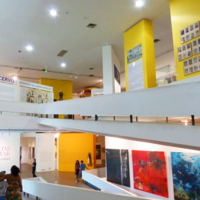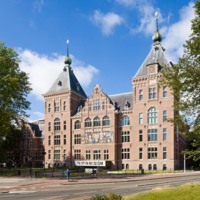
Museu Afro Brasil
First opened in 2004, the Museu Afro Brasil is a contemporary museum which seeks to showcase the contributions of black communities to Brazil and its culture. There are over six thousand objects in the collection, including paintings, sculpture, photographs, ceramics and textiles. Through all of these items the museum illustrates the creative nature of Brazilian people. The exhibitions grew from the private collection of visual artist Emanoel Araujo who has led the museum as Director since its opening. The site also houses a theatre and a specialised library.
In its permanent exhibition space, which displays around seventy percent of its collections, the Museu Afro Brasil emphasises the rich culture of the African continent from the fifteenth century through to today. There are a variety of art mediums and artefacts on display, including masks, sculpture, jewellery and archival material.
These objects link to social themes, such as celebrations and religions, amongst communities of African descent in Brazil. There is also a section that explores the memory of key figures in the Afro-Brazilian community. Another explores the work done by these communities. Historically, this area examines the work done when many African people in Brazil were enslaved. The display features a model sugar mill, different kinds of tools for use on plantations, and sugar loaf moulds.

Tropenmuseum of World Cultures
The Tropenmuseum of World Cultures (direct translation; Museum of the Tropics) is an ethnographic museum, founded in 1864. Housed in one of the 'most impressive buildings in Amsterdam', the museum features eight permanent exhibitions and a series of temporary exhibitions. The key theme of the museum is people, with all of the exhibitions making use of the museum's vast collections of over 150,000 objects, paintings and photographs, to showcase universal human themes, including celebration, mourning and conflict.
In the 'Afterlives of Slavery' exhibition, visitors are confronted with the legacies of slavery and colonialism in contemporary Dutch society. Developed in collaboration with scientists, artists and activists, the exhibition tells the history of slavery with the experiences of the enslaved, and their descendants, at its heart. Video portraits provide the perspectives of four key figures in the contemporary debates about colonial legacies for Dutch black people.
The key link between past and present here is the continuation of inequality and prejudice. Collections, both historic and contemporary, highlight this, as well as illustrating how times have changed. These include testamonies of enslaved people, books, portraits, 'relics of slavery' and examples of African art.